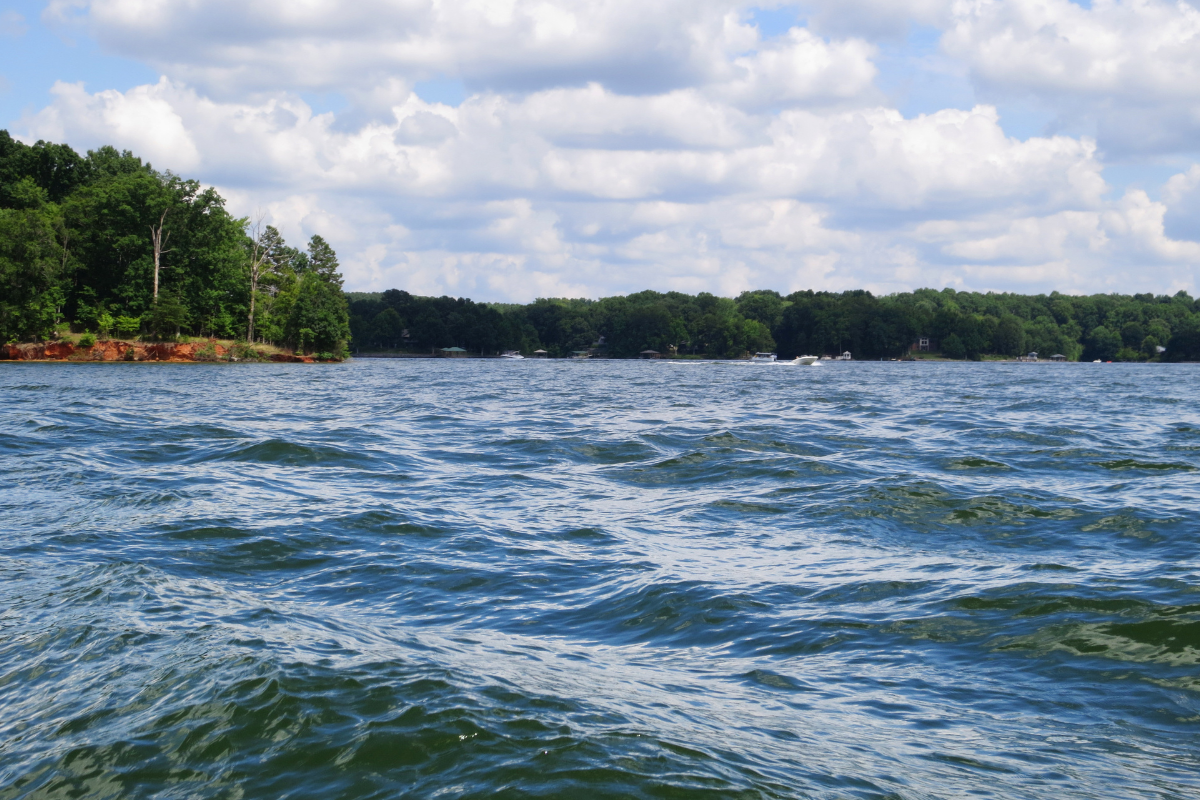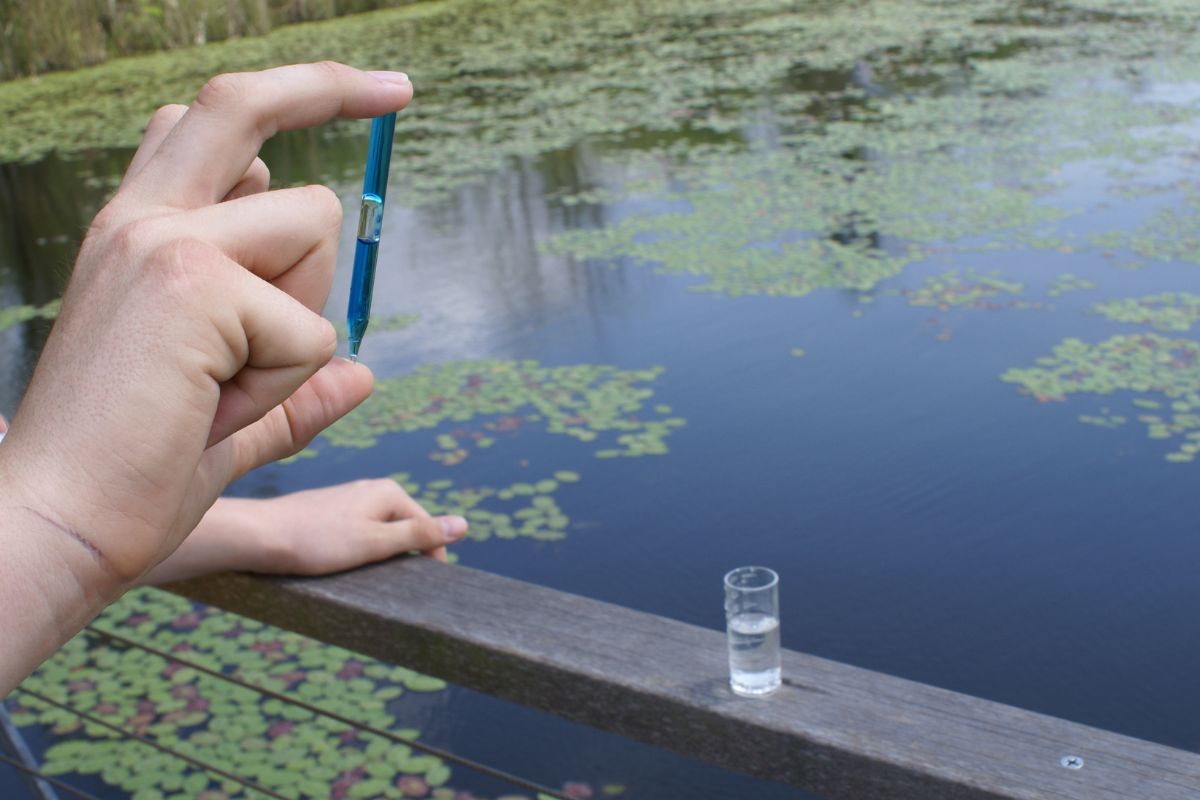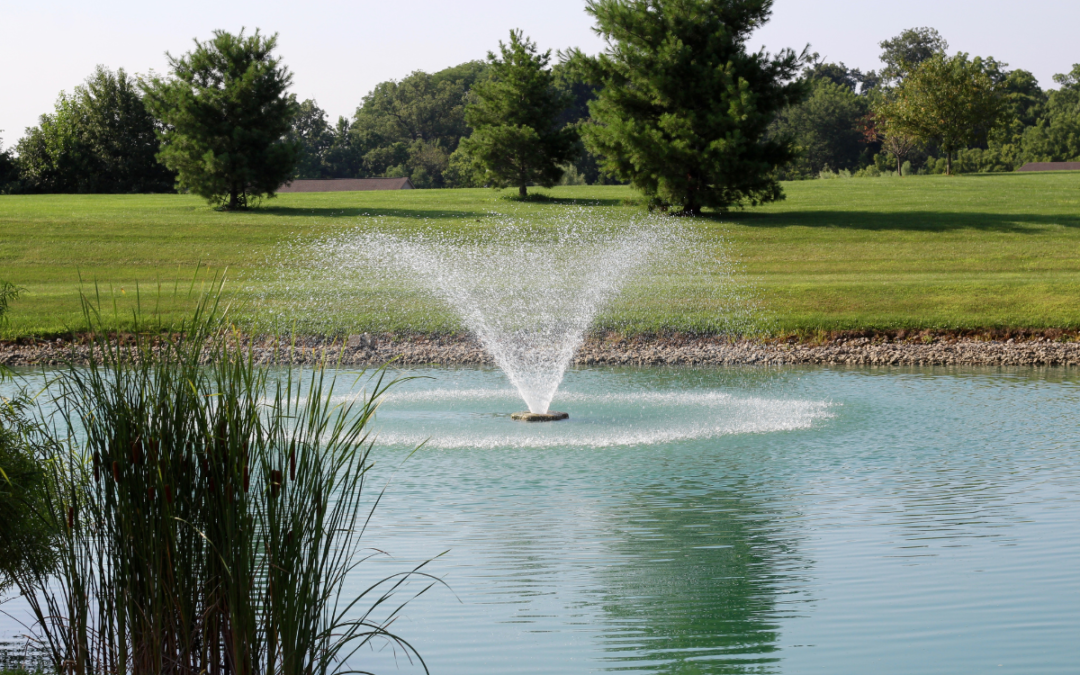Although most pond owners are primarily concerned with the health and growth of their fish populations, water quality is equally as important for the fish and other organisms in the pond. Key water quality metrics that we assess include hardness, alkalinity, pH, and dissolved oxygen. In this blog we’ll delve into the importance of dissolved oxygen in ponds and discuss the sources of oxygen in pond water.
Simply put, dissolved oxygen (DO) is the amount of oxygen dissolved in a volume of water. Typically measured in milligrams per liter, it is a metric used to determine the amount of oxygen available to living organisms in a body of water. Dissolved oxygen is crucial for the survival of fish, invertebrates, and other aquatic life in ponds.
It serves as the respiratory gas for fish, invertebrates, and microorganisms, supporting their metabolism and growth. When DO levels fall below approriate levels, organisms become stressed. This can cause reduced growth rates and even reduced reproduction rates. At critical levels, death to aquatic organisms can occur.

Sources of Dissolved Oxygen
There are four main sources of dissolved oxygen in ponds and lakes. The contribution from each of these sources may vary depending on the location of the pond, the size of the pond, the amount of vegetation in the pond, and the environment around the pond.
1. Atmospheric Diffusion
Oxygen from the air naturally dissolves into the water via the water-air interface. This is an active exchange where atmospheric gases are absorbed through the pond surface. Via a process called diffusion, oxygen molecules move from areas of higher concentration to areas of lower concentration. In the case of the exposed pond surface, water moves from the higher concentrated atmosphere to the lower concentrated pond water in an attempt to reach equilibrium.
2. Photosynthesis
Aquatic plants can play a vital role in maintaining dissolved oxygen levels through photosynthesis. These plants include macroscopic pond vegetation and microscopic plants like algae. During the daylight hours, aquatic plants absorb carbon dioxide and release oxygen into the water. This contributes to elevated oxygen levels in the water and is a key process that helps balance oxygen production and consumption in aquatic ecosystems. As we’ll discuss in future blogs, issues arise when oxygen consumption is higher than oxygen production.
3. Wave Action and Turbulence
Mechanical processes such as wave action and turbulence also contribute to oxygen transfer in ponds. Agitation of the water surface increases the surface area of the pond, maximizing the contact between the air and water. This facilitates a higher exchange of gases compared to a pond that is still.
In larger ponds and lakes, wave action and turbulence will be more significant than it is in smaller ponds. This is one of the primary reasons smaller ponds are more prone to dissolved oxygen deficiencies, especially in the warmer summer months. Small ponds that are surrounded by trees can also be at high risk for dissolved oxygen problems. The trees often block the wind so that there is minimal disturbance on the water surface, reducing the amount of oxygen exchange into the water.
4. Aeration
This is not a natural source of dissolved oxygen, but one that many pond owners employ to increase the amount of oxygen in their pond. Aeration tools may include diffusers, fountains, or paddle-wheels. Each of these promote water exchange by disturbing the water, much like wave action and turbulence does in a larger pond or lake. While many view fountains as an aesthetic addition to a pond, they’re very useful for adding oxygen to smaller ponds that don’t get much wind or wave action.

Appropriate Dissolved Oxygen Levels
Ideally, we like to see dissolved oxygen levels between 5 mg/L and 10 mg/L. As we’ll discuss in a future blog, this metric can fluctuate seasonally based on water temperatures and other factors. But when levels reach 4 mg/L or lower, there is considerable cause for concern.
Understanding the dynamics of dissolved oxygen in ponds is crucial for maintaining a healthy aquatic environment. We diligently work with pond owners and discuss the factors that can impact dissolved oxygen levels. Whether through promoting natural oxygenation processes, employing aeration systems, or managing key variables, the careful balance of dissolved oxygen ensures that ponds remain vibrant, thriving habitats for diverse aquatic life.
Let Up Help Improve Your Pond!
If you’re concerned about the water quality in your pond, complete this form and we’ll contact you to schedule a time to meet. We’ll perform a comprehensive water quality analysis and provide recommendations for how to improve key water quality metrics. We look forward to turning your pond into a productive fishery for years to come!

